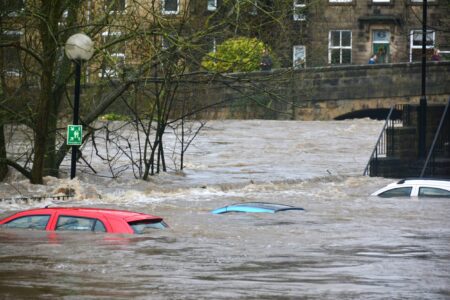River Talks — The Big Thirst
Since 2005, Eileen Delehanty Pearkes has researched and explored the natural and human history of the rivers of the upper Columbia River Basin.
She speaks frequently at conferences and symposia throughout the Basin on the history of the Columbia River Treaty and its effects on Basin residents. She has recently completed a manuscript titled A River Captured – history and hydro-electricity in the upper Columbia Basin.
An American by birth, Pearkes has been a resident of Canada since 1985 and Nelson since 1994. She has written many articles and several books that explore place and its cultural meaning.
The Geography of Memory, a history of the landscape and indigenous people of the upper Columbia watershed published in 2002, remains a Kootenay classic.
Pearkes has agreed to help The Nelson Daily readers understand the importance of the Columbia River Treaty to the region with another edition of River Talk.
Today the Pearkes writes about how past construction of dams have gobbled up agriculture land in BC.
The recent announcement by the B.C. government that they intend to go ahead with the construction of the $8 billion Site C dam on the Peace River brought briefly to public attention the potential loss of agricultural land there.
The dam’s reservoir would flood 5,550 hectares, a significant portion of it in use for active farming and ranching.
There is here a difference between size and significance. The lessons of the Columbia River Treaty (CRT) are a case in point.
In the 1950s, just before Canada signed the treaty authorizing the flooding of the Arrow Lakes valley’s farmland, British Columbia’s government was still producing informational pamphlets promoting the region and supporting the region’s agriculture.
In fact, this valley from Castlegar to Revelstoke was the third largest agricultural producer in the province, behind the Fraser and the Okanagan. Growing food there required little if any irrigation.
Farmers made use of the Columbia’s natural flood cycle to mow two, rather than one crop of hay.
The Arrow Valley was not the only agricultural area at risk. There was farming and ranching in the Rocky Mountain Trench south of Cranbrook, in the Pend Oreille valley, and even a few places in the upper Columbia near Valemont and the Duncan River valley.
Only the farming community near Creston B.C. stood to gain from regulated flows of the Kootenay River by Libby dam.
As the brewing controversy over Site C is again demonstrating, agriculture and storage reservoirs don’t match up as compatible uses of the same valley. In the CRT negotiations, the Canadian and B.C. governments ultimately dismissed the significance of agriculture in the Arrow and other valleys to be flooded, largely because of the short-term financial advantages of creating storage reservoirs.
Ironically, these CRT storage reservoirs have offered significant support to agriculture, only in the U.S., not Canada.
Here’s how:
A pivotal project for the U.S. development of agriculture in the Columbia Basin pre-dated the CRT. Constructed in the 1930s, Grand Coulee dam was initially conceived as a way to water the Columbia Plateau — millions of acres of rich, silted soil that received only 10 percent of the annual rainfall needed to be really productive farmland.
Grand Coulee was specifically designed to gather and pump Columbia River water up into the hot, dry plateau, where a system of canals re-distributed the water farmers needed.
As the arid west grew hungrier for electricity as well as farm crops, the need to store water for power increased. The CRT allowed the water re-distribution program at Grand Coulee to continue much as it had been conceived, while also providing water to U.S. generators downstream to produce reliable power.
A new question now risies in CRT policy circles.
How much is the water storage that Canada provides worth to U.S. agriculture today?
And more broadly, I would ask: Should B.C. once again destroy agricultural land in order to produce mega-kilowatts?
Is size the only determination of significance?
None of the treaty authors could have predicted the effects of climate change. Scientific modeling forecasts warmer and dryer trends across the Columbia Basin into the next century, with the arid mid-Basin’s agricultural region slated to feel the effects most intensively.
The result could be increasing pressure even more on CRT storage systems — to provide the consistency of water supply everyone in the Basin has come to expect.
According to Rachael Paschal Osborn of the Center for Environmental Law and Policy (www.celp.org), ground water drawn from deep wells in the dry part of the basin is decreasing rapidly as farmers irrigate potatoes for the fast-food industry.
The flow from Canadian storage reservoir water could become even more valuable not just for the flexibility it provides, but for the water supply itself.
In Osborn’s view, the big thirst by U.S. agri-business will likely de-stabilize the CRT three-legged stool of hydro-generation, flood control and migratory fish issues.
Meanwhile, the agricultural land flooded by the CRT is gone (perhaps forever) and more losses in the Peace River valley are on their way.
Read the most recent River Talks as well as other columns located in link at the bottom of the page.

























